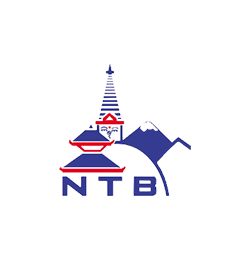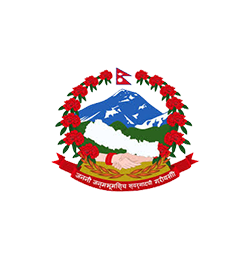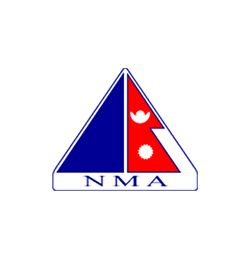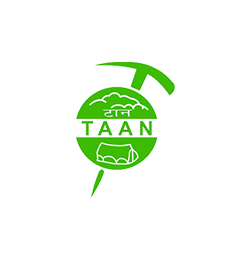
Overviews
Why do most trekkers catch high altitude sickness or AMS (Acute mountain sickness) on Everest Base Camp; then on Annapurna base camp treks? The answers and reasons are very simple and interesting the difference between the Everest base camp and the Annapurna base camp. First of all, both Annapurna and Everest regions are apart in distance, Annapurna Himalayas are located in Nepal’sFar North Mid-West. While Everest and Khumbu Himal is situated towards Far North Mid-Eastern Nepal. Although the landscapes are quite similar, the attitude makes the difference on both treks to these base camps. Everest base camp treks begin on moderate trails and become more adventurous due to rapid gain in altitude. Annapurna Base Camp trek leads to a steep uphill climb amidst a beautiful dense green forest following a river gorge. Where elevation gains slowly and gradually, which makes the trekkers feel safe altitude-wise. Annapurna Base Camp Trek for a physically fit person can complete the trek in a week or less duration. Which involves an exciting short drive from the beautiful city of Pokhara, located on the lap of the Annapurna Himalayas.As for Everest base camp, where trek involves a short scenic flight both waysKathmandu-Lukla-Kathmandu. The walk begins at the Everest base camp and takes more than a week, a minimum of 11-12 days from Lukla to Lukla. The major region of Everest Base Camp reaching at a height of 5,364 m /17,598 feet high.Includes the climb on top of Kalapathar rocky scenic view-point at 5,643 m/18,514 feet. For grand closest views of Mt. Everest and surrounding towering peaks. On Annapurna Base Camp trek begins from low 1,100 m to 2,000 m and then reaches 4,131 m / 13,553 feet. The highest point of the adventure is at Annapurna Base Camp and the Sanctuary.
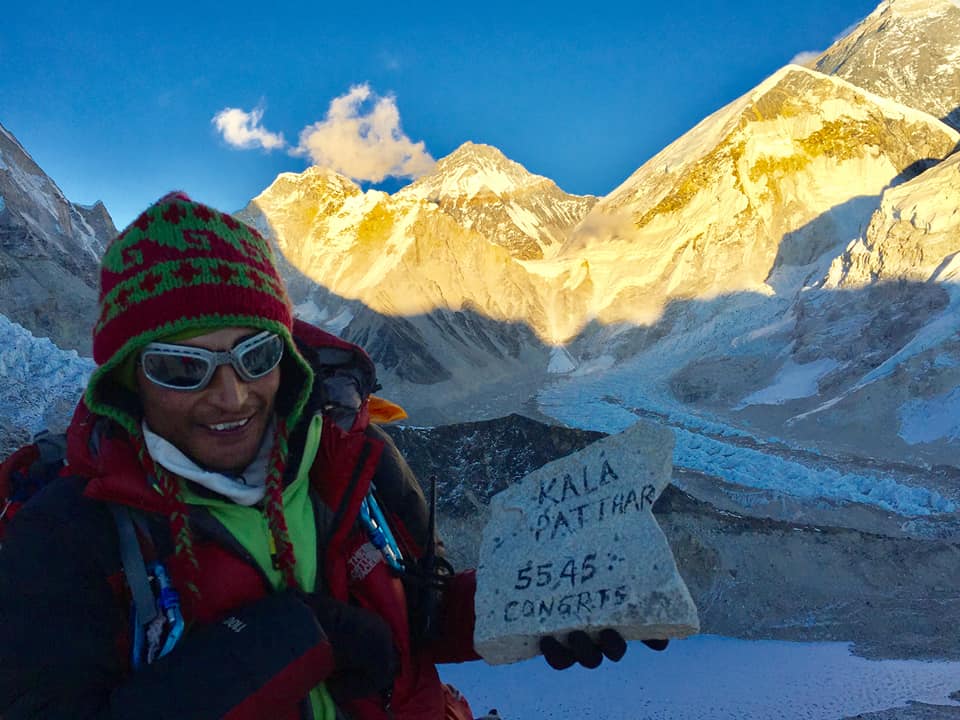
INTRODUCTION TO ANNAPURNA BASE CAMP TREKKING
The mode of trekking to Everest base camp, staying overnights in local Tea-House, from standard to Luxury lodge. The grade of trekking is Moderate to Adventurous with a touch of high altitude. Trek to Everest base camp is 8 days from Lukla, Namche, Tengboche, and Dingboche or Pheriche, Lobuche.
Spending overnight in Gorakshep after visiting the Everest base camp, and then the next morning a steep climb on top of Kalapathar. The highest point of the trek is at 5,643 m /18,514 feet for the closest grand majestic views of Mt. Everest. The Everest base camp is above 5,364 m / 17, 598 feet high, where views of Everest are obstructed.
The Everest base camp trekking beside amazing scenery of snow peaks throughout the walk from Lukla to Lukla. The local Sherpa culture is equally exciting and impressive, as the trail follows through from one nice village to another. The trek starts on a gradual up-and-down path with a steep climb to Namche Bazaar at 3,440 m /11,286 feet. Where all trekkers need an extra night and day at this high altitude for acclimatization. Spending two overnights with short hikes, the trek follows scenic trails to Tengboche, a beautiful place with an impressive monastery.
The adventure heeds slowly leaving the green vegetation and tree lines for sheer mountain wilderness, heading towards Dingboche. After having rest at Dingboche at 4,410 m / 14, 468 feet, the walk leads higher to Lobuche. Located at 4,940 m/ 16,210 feet high, and then towards Everest base camp and climb of Kalapathar scenic hill.
On completing all the major highlights head back to Lukla within 3-4 days for the last overnight. After covering a total distance of 11 and 12 days from Lukla to Lukla, with a long downhill with a few short ups.
INTRODUCTION TO ANNAPURNA BASE CAMP TREKKING
Annapurna Base Camp Trekking is one of the picturesque adventure destinations around the Himalayas. An amazing feature of Annapurna Base Camp is that one can cover the whole adventure in a week’s duration. The other good and best about this trek, the elevation gains slowly and gradually, without the problem of catching AMS. (Acute Mountain Sickness)
Annapurna Base Camp Trekking starts and concludes in Pokhara, a lovely scenic city, and a renowned tourist destination. The walk begins with a short exciting drive to the foothills of the Annapurna Himalayas, around low sub-tropical farm areas.
A great change of biodiversity one can experience on the Annapurna Base Camp trek, from sub-tropical to cooler hills. As the walk progresses heading towards the arctic zone remorseless fields of ice and glaciers, are enclosed by staggering towering snow peaks. Where walk follows the lovely Gurung village of Chomrong then the trail leads to Modi River gorge. The trail leads to a slow steep uphill and then the gorge opens into a wide valley. On entering the scenic Annapurna A sanctuary hidden by a series of Annapurna Himalayas giant peaks, a walk leads to Annapurna Base Camp.
Annapurna Base Camp at 4,131 m / 13,553 feet high, located beneath the massif Annapurna-I (8,091 m). The world’s 10th highest peaks, as well as the first 8,000 m mountains ever climbed in the history of mountaineering.
Mt. Annapurna-1 was summited on June 3rd, 1950 by French Expedition, three years before Mt. Everest was conquered in 1953. Enjoying marvelous moments at Annapurna base camp in the comfort of a nice
cozy lodge, return journey downhill to reach Pokhara.
SAFE PRECAUTIONARY MEASURES FROM ALTITUDE SICKNESS / AMS
Whether joining Everest Base Camp or Annapurna Base Camp Trekking, travelers should be aware of safety measures. The main reason for treks around high altitude areas of the Himalayas is precaution from altitude sickness or AMS (Acute Mountain Sickness).
The most important to know about AMS is on Everest base camp trekking, where altitude is the major factor. Once trekkers are used to the altitude having well acclimatized, make your adventure holidays most enjoyable and worth the risks.
As for Annapurna Base Camp, the altitude does not affect the trekkers due to the slow rise in elevation. The height does not reach above 4,131 m, except on reaching the Annapurna Base Camp.
On the Everest base camp trek, the gain in altitude can be felt on daily walks. The elevation rises from 2,880 m to above 3,440 at Namche Bazaar and onwards to a maximum of 5,364 m. The actual height of Everest base camp, not counting the extra optional climb to Kalapathar Hill. Various precautionary measures should be adopted especially on Everest base camp trekking, heeding slowly not pushing or
tiring yourself.
Having frequent refreshing stops where needed to catch your breath from panting, as well as drinking plenty of fluid and water. The best is acclimatization against high altitude, staying a few overnights at the same altitude as in Namche Bazaar and Dingboche.
Important safety measures as a precaution against high altitude symptoms
A: Use of Diamox:
Most people, especially beginners on treks to high altitude like Everest base camp gets advice and recommendation from doctors. As well by medical experts, use Diamox pills for precaution against high altitude sickness or AMS.
Diamox is a brand name for Acetazolamide, which can prevent the symptoms of AMS or High Altitude Sickness. Taking the right dose as recommended by doctors, will help the victim from catching altitude sickness.
The dose, however, should be practiced before the start of the trek toward your high-altitude destinations.
The side-effect is makes you pee a lot, which makes you drink more fluid. The dose should be continued and completed, till where you started taking it in the beginning.
B: Check your Pulse by Oxy Meter:
The other useful item to carry is an Oxy meter, to check your oxygen level or percentage at every overnight stops. Oxy meters are useful in checking the oxygen level in your body at certain heights but do not panic. At high altitudes the Oxygen level is low, as well as the air pressure, collect full information from the medical experts or doctors.
The atmospheric pressure and inspired oxygen pressure fall roughly linearly with altitude to 50% of the sea level. Value at 5,500 m and only 30% of the sea level value at 8,848.86 m (the height of Everest).
The final destination of the oxygen at above 3, 000 meters altitude = 95+ Above 4,000 meters = 85+, and then above 5,000 meters = 75+ below 75 oxygen levels. Where the victim or sick person requires immediate attention for the need of oxygen, available in Lobuche and at Gorakshep.
C: Being well equipped for cold and wind factors.
All trekkers must be aware of wearing and carrying the right clothing and warm gear for Everest Base Camp. Too much cold can make you tired and leads to ill health, better to be wise wearing warm clothing. As per the weather and season-wise, the daytime is mostly clear with sun-shine around higher altitudes.
But the afternoon time can get overcast bringing a cold wind-chill factor, where temperatures drop. Best to cover your head with a woolen Beni, Balaclava, and shield the face with a scarf. Long Trousers, long-sleeved shirts, fleece, and Down Jackets or Gore-Tex outfits. Stay away from cold wind, on walks having shelter where available against cold wind or blizzard. Gloves or mittens should be kept to keep your hands warm against being numb from the cold.
D: Drinking water or any fluid per day minimum of 3-4 liters
Besides, various safety measures and pre-caution the best is to drink enough water or any safe fluid. As high altitudes can dehydrate the body, and strong UV from the bright sun is common at higher altitudes.
The water should be refilled at available stops in Tea-Houses or Lodge restaurants. Bottled or mineral water can be quite expensive in the mountains, especially on the Everest base camp trek. The best is to re-fill the safe drinking water which should be boiled and filtered from sediments. Bottled water can be
bought unless in emergency and urgent needs, due to being a responsible trekker. As well all should follow the Eco-Tourism rules not making waste with extra garbage of plastic bottles.
E: Drinks Garlic soup:
When in Nepal, around the high Himalayas for various adventures, the best is to add some garlic to your diet. One of the best ways to fight the altitude is by consuming raw garlic or having Garlic Soup. If one is not feeling well due to altitude problems, enjoy warm garlic soup. Garlic is an herbal medication used by
local villagers and guides on high-altitude trekking. The good thing about having garlic is it makes the blood thinner, from having clots. So it can flow smoothly around your inner body and make you feel better.
F: Hire a horse to go down:
For mild sickness, feeling unwell and tired and able to continue the rest of the journey. Your guide or the lodge owners can help you fix a horse to carry you down lower to a safe altitude. The cost of hiring a horse varies from the distance of each destination or overnight stop. The local horse breed known as the Tibetan pony is strong and suitable on mountainous terrains.
G: Call for Helicopter Service:
In serious situations due to severe high altitude sickness / AMS or from other past medical problems. The quickest and fastest means of transportation is using Helicopter Services. The guide or Lodge Owners will help you request for Helicopter from Lukla or Kathmandu, on medical grounds.
The Helicopter can bring you to a safe altitude at Lukla or continue with the Helicopter flight back to Kathmandu. Soon as the Heli lands in Kathmandu, the ambulance service will be there to take you to the best hospitals.
All extra medical bills and costs of Helicopter service should be made and settled in Kathmandu. Before you depart for your home country, you can apply for a refund of extra expenses through your insurance companies.
H: Be positive and do not panic:
On treks to enjoy the best is feeling oneself healthy and physically fit, and being of positive attitude. That is taking things as it comes, this is how to enjoy the adventure, if feeling slightly sick. Do not worry or panic, stay longer in one place if not feeling well, the guide and lodge landlord will always be there to help you.
In any type of problem, the mountain villages all around Nepal are known and reputed as one of the friendliest. As well as helpful in providing warm hospitality, trekking is enjoyable, despite the hardship of steep ups and downs. Take it as a journey and not as a destination, the best way of enjoying your holiday around the Nepal Himalayas.
The symptoms of altitude sickness (AMS)
The victims of AMS or altitude sickness can face various types of symptoms, starting from nausea, vomiting, and lack of appetite. Including light to severe headaches and feeling dizziness, tired and breathless, as well sleepless nights.
The most critical symptoms are HACE (High Altitude Cerebral Edema) Water in the brain and HAPE (High Altitude Pulmonary Edema) Water in the lungs. A person with these two symptoms needs immediate evacuation by the fastest means of
transportation, or carry the victim down and down. Where he/she feels safe from altitude sickness and can take rest for a few days. Either carry on trekking or return to Lukla if the condition does not improve.
01: Vomiting / Nausea:
The first sign of AMS or altitude sickness is feeling Nausea and vomiting throwing all the foods. In this situation, the victim needs immediate care, rest, and providing assurance, if it gets worse. The only solution is to take the sick down to a lower safe altitude, accompanied by friends, family members, or trekking staff.
02: Lack of appetite (Not able to enjoy any food):
Simultaneously, along with Nausea or vomiting, the victims lose their appetite and feel sick just from smelling the foods. Needs plenty of rest, and much water to drink slowly sip by sip, after a few minutes or less than an hour. Check the patient, if the condition does not improve, the only option is to take the sick
down. Heading to a lower place where he or she might regain back to normal, or should bring the victim to Lukla. For the early flight back to Kathmandu on a normal scheduled flight or by helicopter.
03: Headache:
Headache is the most common symptom of AMS or altitude sickness, it starts with a light headache. Then it pounds to severe headache which will be hard to stop, even with Diamox or other medication. If it continues the patient should be brought down to a safer altitude, where he or she will feel gets better.
Whether to continue the trek or cancel and return home depends upon the condition, having rest for few days. Some will pull back the strength to continue, if feeling weak and needs to be taken back to Lukla. As well as back to Kathmandu for proper rest and medical check-ups.
04: Dizziness:
Dizziness, is part of AMS or High Altitude Sickness Symptoms, along with headache, feeling nausea at the same time. If can get worse, the patient should be brought down to a safe lower altitude and needs plenty of rest.
As well as having fluids to bring him or her back to normal condition, the dizziness can be for some time. Acts like a drunken person, and won’t be able to recognize family or any other close companion. If it persists needs great care and should be evacuated lower down to a safe altitude.

